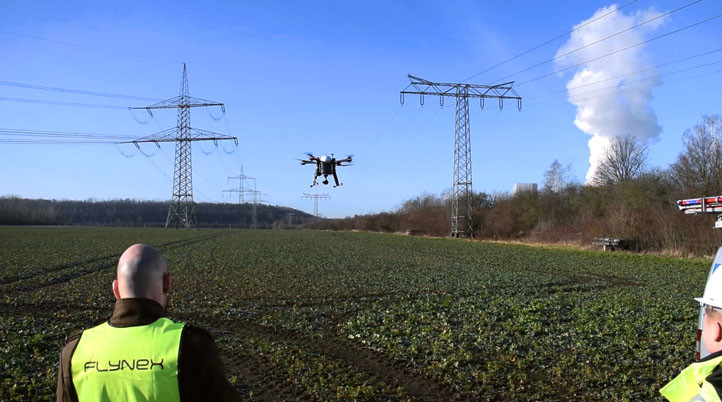Every year, MITNETZ STROM, a German electricity network operator, uses helicopters to inspect around 3,000 kilometers of high-voltage network and look for damage and hazards to power lines and masts. However, the use of helicopters for inspections is expensive and brings significant safety risks, which is one of the reasons MITNETZ sought out drones to do the job.
Earlier this year, MITNETZ partnered with FlyNex, a digital solutions provider for commercial drone operations, to obtain all the necessary permits and fly a drone along an 18-kilometer section of a power line to the south of the city of Leipzig. Using its digital software solution for planning and flying a drone, Flynex performed a fully automated beyond visual line of sight (BVLOS) flight with the Ceptor 8L provided by Globe UAV.
"We have known for some time that BVLOS flights are possible,” explained Michael Petrosjan, Managing Director of FlyNex GmbH. “This is exactly where drones bring an enormous economic advantage. Electricity pylons and overhead power lines or gas pipelines are predestined for this type of inspection from the air.”
Flying at an altitude of between 25 and 50 meters and a speed of up to 30 km/h, Flynex’s drone flew safely over high-voltage pylons, residential and commercial areas, forests, and fields and passed several towns and villages. During the test, due to the low temperatures and an increased energy requirement, the drone made a stop for a battery change and then continued the same route back.
In addition, the test flight was livestreamed so everyone, including media and residents, could follow the flight. Also, if there were any deviations in the route or complications, the pilot monitoring the flight could have intervened directly from the screen.
“However, there was no need for this, since the test flight was successful,” said Jens Hache, project manager at MITNETZ STROM. “There were no complications or events that stood in the way of another test. On the contrary, we have gained experience and can turn the necessary screws for the next flight.”
In the end, it took 45-minutes to complete the test, and the drone captured around 1000 pictures, digitally recording almost 40 kilometers of power lines and about 70 power pylons. This data was then analyzed with the support of artificial intelligence from eSmart Systems’ Connected Drone software.
In the future, MITNETZ STROM wants to establish the automated use of drones in addition to the use of helicopters.
During the rest of the year, FlyNex plans to perform similar flights and has recently started cooperating with other companies and projects in the construction and renewable energy sectors.















Comments